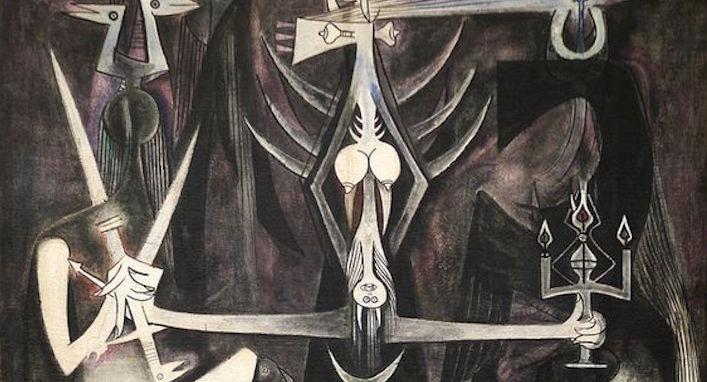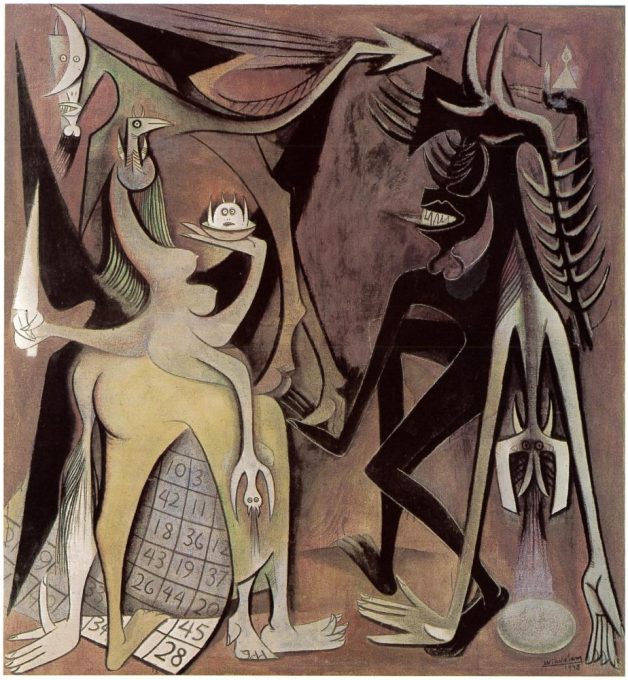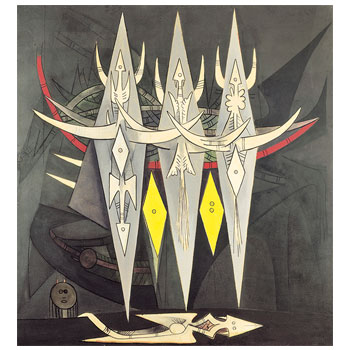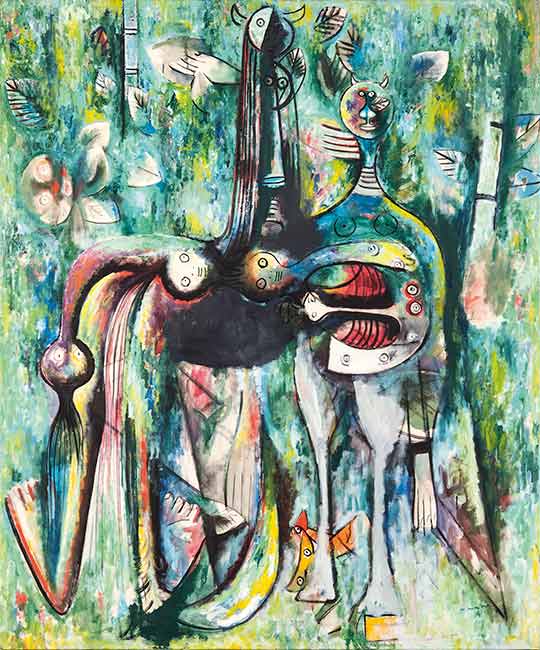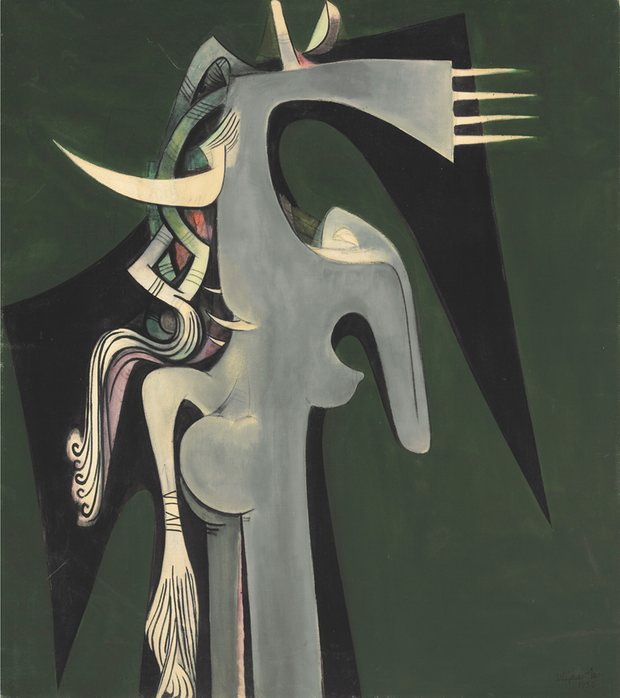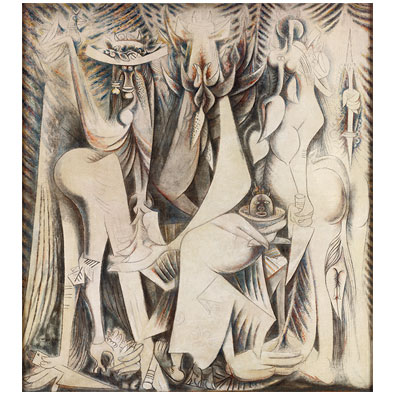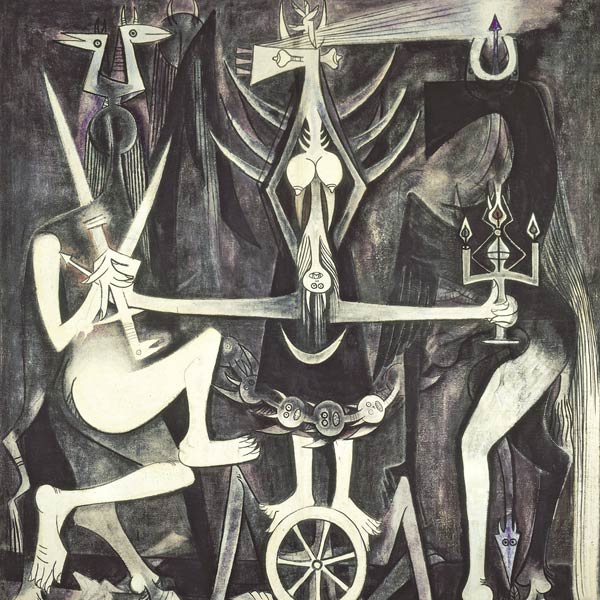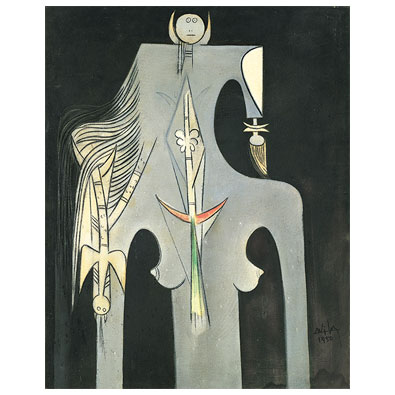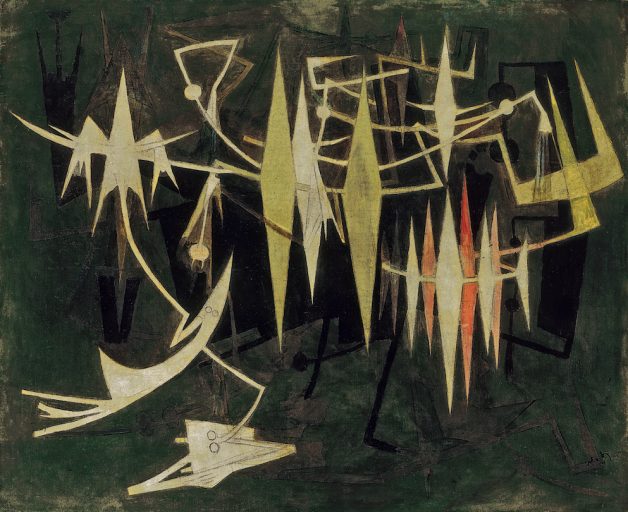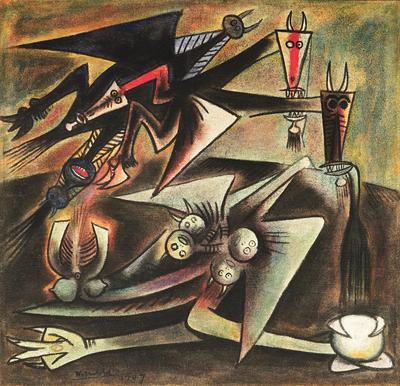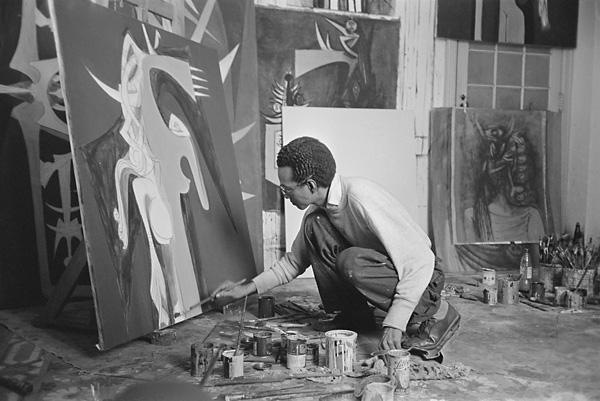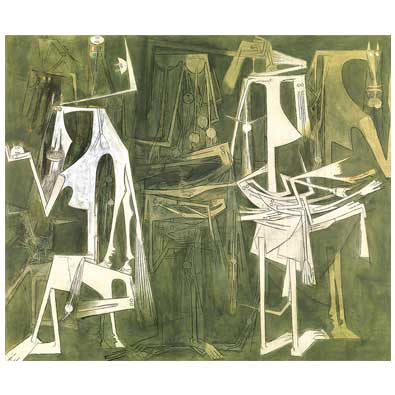Wilfredo Lam review – Cuba’s last of the true surrealists
by Jonathan Jones for the Guardian
Tate Modern, London
The artist’s odyssey from Cuba to Europe and back again turned him from a disciple of Picasso into a feverish painter of gods, monsters, mystery and sex
In 1941, a group of intellectuals who believed in black magic sat in a villa near Marseille shuffling tarot cards as they waited and waited for a chance of a boat out of Nazi-occupied Europe. The tarot pack did not show their futures. Instead they drew and painted on the cards, turning the arcane symbols into portraits, the portraits into dreams. Another way to pass the time was by playing a surrealist version of the parlour game Consequences, collaborating to create bizarre collages. The time hung heavily, but in the end they sailed for the New World.
It must have seemed like a voyage backwards to Wifredo Lam. This Cuban-born artist was one of the bored refugees who played with the tarots at the Villa Air-Bel, along with André Breton, leader of the surrealist movement, who would become a lifelong supporter of Lam’s work.
See Full article at the Guardian: Wifredo Lam review – Cuba’s last of the true surrealists
The following Extracts given below are from the TATE web-resources for the Art Exhibition
In late 1945, Mabille invited Lam to Haiti for a solo show in Port-au- Prince. There Lam and Holzer were reunited with Breton, who wrote a poetic text, ‘At night in Haiti’, which evoked Lam’s art. During their stay, they witnessed political unrest, and attended a number of Vodou ceremonies. These experiences inspired the new works made for an increasing number of exhibitions, including the International Exhibition of Surrealism at Galerie Maeght, Paris, and Bloodflames at the Hugo Gallery, New York, both in 1947. TATE – Wifredo Lam Room Guide: Port-au-Prince and New York
Several paintings around this time incorporate the figure of the femme-cheval or ‘horse-headed woman’. During Vodou and Santería rituals, known only to initiates, the worshipper is allegedly taken possession of, or ‘ridden’, by a spirit. Over time, the horse-headed women of Lam’s paintings gradually acquired more identifiably human and eroticised attributes. This was an oblique reference to the exploitation of women of mixed heritage in Cuban society, some of whom were forced, through poverty, into prostitution. TATE Wifredo Lam Room Guide: Havana and Paris
The details indicate a parallel, visionary world evoked through Lam’s allusion to Santería Orisha in the horned head of Elegua, the Messenger-God, and the double spear of Changó,the God of Thunder. Here, and in related works such as Altar for Elegua 1944 and Altar for Yemaya 1944, Lam suggests an atmosphere of energy and mystery rather than illustrating a particular ritual. TATE – Wifredo Lam Room Guide:
see more resources and the exhibition at the TATE: THE EY EXHIBITION: WIFREDO LAM

